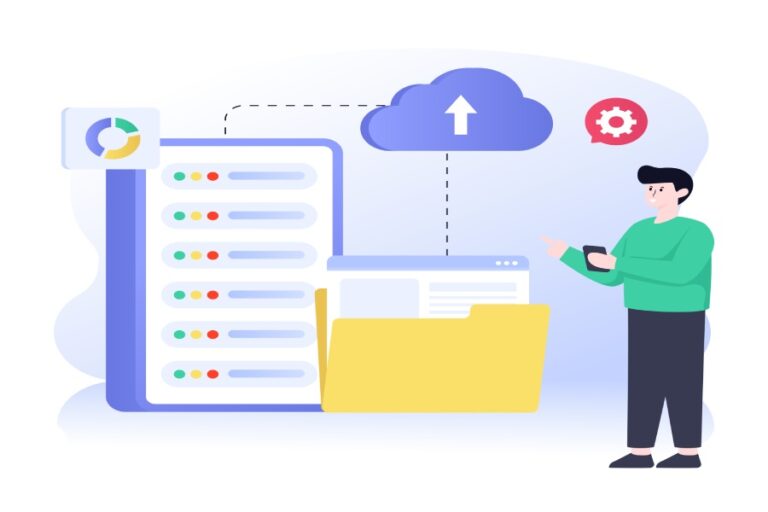Things Financial Institutions Need to Know About Spoofing

The global banking sector has been experiencing a severe surge in cyberattacks, and the US Banking industry is no different. Renowned financial institutions like SunTrust, JP Morgan Chase, and Bank of America have faced the brunt of cybercriminal activities such as spoofing and phishing multiple times. Large or small, no banking institution is safe now from threat actors.
The sharp spike in the number of cyberattacks in the banking industry is associated with the easy availability of artificial intelligence systems. AI has made it convenient, less time-consuming, and easy for threat actors to devise refined and laser-focused cyberattacks on financial institutions. The smaller the financial company, the bigger the risk because of the lack of a cybersecurity budget and awareness training programs.

The government and relevant authorities have taken cognizance of the situation. The US Consumer Financial Protection Bureau, or CFPB, is taking significant measures such as the Electronic Fund Transfer Act (Regulation E).
Apart from experts and government agencies, financial institutions too must stay updated about cyberattacks, especially spoofing. Awareness and preparations, along with close collaboration with relevant authorities, can hopefully bring down the rate of such attacks to a great extent.
Let’s first understand spoofing in detail.
What is spoofing?
Spoofing is a popular type of cyberattack whereby threat actors impersonate well-known companies and mimic their logos, email addresses, display names, website URLs, etc., in order to create a sense of credibility. They do so easily by making small tweaks to names, logos, letters, symbols, etc., which go unnoticed by the victims. Spoofing enables threat actors to download malware, coax victims into sharing personal and financial data, wire funds, and so on.
There are majorly 7 types of spoofing tactics, namely:
- Email spoofing
- Domain spoofing
- IP spoofing
- Caller ID spoofing
- GPS spoofing
- Text message spoofing
- Facial spoofing

Domain Spoofing on Financial Institutions
According to research, around 62% of the 62,074 domains registered between January and June 2024 are involved directly or indirectly in spoofing activities. Major financial institutions like BBVA, PayPal, and HSBC have been frequent targets of spoofing attacks. Wells Fargo topped the list of the top 10 targeted companies in the first quarter of 2024. The ‘Buy Now Pay Later’ scheme on cars, phones, clothes, and other products has also fueled spoofing attacks.
Cybercriminals target the IT departments of financial institutions as well as their customers. The latter is targeted because of their lack of awareness and increased vulnerability. These threat actors create fake websites and drive traffic to the same by leveraging multiple tactics such as social media, phishing emails, text messages, etc.

They go to the extent of investing in paid advertisements to rank their fake websites at the top of search engine results. When a naive user unknowingly clicks on any of these fake website links, they are asked to type in their login credentials, such as username and password.
Sophisticated spoofing attacks backed by artificial intelligence
The penetration of AI deep into our lives has made it easy for threat actors. With AI, they can easily plan and execute large-scale phishing and spoofing attacks. Not only this, AI also enables them to evade tracking mechanisms for quite a long time. With the help of artificial intelligence, threat actors also generate NSDs or Newly Registered Domains to gain access to user data.
Artificial intelligence has made it quite convenient for cybercriminals to gain easy access to convincing phishing campaigns. Deep Learning, Natural Language Processing, and Machine Learning have been increasingly contributing to the creation of spoofs that can easily evade threat detection mechanisms. AI is a good learner, and with time, it will further make the spoofing tactics more sophisticated and flawless.
The attack on Pepco is a staggering reminder that AI technology is being actively used to carry out sophisticated spoofing attacks.

Impact of advanced spoofing attacks on financial Institutions
The damage does not stay restricted only to financial losses and individual victims. A spoof attack is a strong blow to the credibility and reliability of the banking sector. Multiple attacks on the same brand can further deteriorate its reputation and thereby affect its future relations with key stakeholders and customers.
Remedial steps and measures
It is high time financial institutions get strict with prevention measures in order to protect their employees as well as customers. To effectively combat the surge in cyberattacks in the banking sector, institutions should implement robust email authentication protocols such as SPF, DKIM, and DMARC to protect against spoofing and phishing threats.

Implementing threat intelligence can help prevent spoofing attacks by offering close monitoring day in and day out. It also helps financial institutions stay a step ahead of threat actors by keeping them updated about the latest spoofing tactics and trends.
Using verifying redirections from email or SMS text can also help check any kind of spoofing attempts.
Consumers should also be careful and practice cyber hygiene, such as using multi-factor authentication systems, strong passwords, and regularly updating banking apps.






